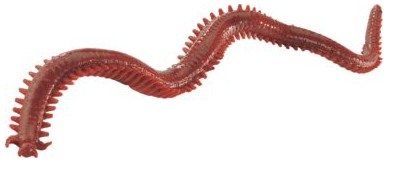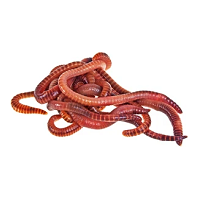9 Easy Facts About Where To Find Red Wigglers Described
Table of ContentsThe smart Trick of Where To Find Red Wigglers That Nobody is Talking AboutNot known Facts About Where To Find Red WigglersGetting My Where To Find Red Wigglers To WorkThe smart Trick of Where To Find Red Wigglers That Nobody is Discussing3 Easy Facts About Where To Find Red Wigglers DescribedTop Guidelines Of Where To Find Red Wigglers
For best results, you intend to aim for regarding 60-70% dampness degree. The easiest examination for this is to press a handful as hard as you can. At the perfect wetness degrees which is just under 70% that handful ought to barely produce one drop of liquid. pH in a worm bin is pretty easy to maintain.
The Indian Blue is voracious, but also likes a warmer climate and it additionally displays a tendency to get away the bin. The red wiggler is a sturdy worm and isn't as fussy about its climate. I like to call it the Ford Taurus of vermicomposting worms; you will not brag to your hardcore composting friends that you own them, but they will certainly offer you well.
As Faucet showed, a fishermen can do an excellent bargain to make a worm extra appealing.
Where To Find Red Wigglers - Truths
I think you will certainly as well if you attempt them. The smaller the trout stream, the much better worms work is an axiom that hasn't changed in the 100-plus years because Perry composed his post. Anglers of his age just stuck their rickety fly poles through alder tangles and dropped a heavy worm into a deep opening.
Early morning is prime feeding time, and the lightweight lure's slow-moving descent leaves 5 inches of wriggling protein in complete view for a long time. After you have actually made the actors, maintain the bail open and placed the rod in a forked stick. The line will certainly fall off the pole in sluggish loops as the worm settles, yet usually the slow-moving loopholes will end up being a blur, and the early morning will unexpectedly get rather fascinating.
You can fish deep and cover a lot of region, and the crawler appears to be the excellent touch for this transitional time, when the smallmouths have yet to secure on to a preferred forage. Dark jigsblack, brown, and purpleseem to match the nightcrawler's shade. I usually use an entire 'crawler, like marabou dressing, and go down the rod for 2 or 3 secs when I get a hit.
And distinguishing base from a bite can be hard. The method is to relieve the rod back to the strike (perhaps a foot) and feel for life at the end of the tightening up line. If it's there, established the hook with a move as opposed to a jerk. Occasionally you'll locate on your own hooked to those slow-moving, passionate tugs, and really feel the weight of a nice walleye.
Not known Details About Where To Find Red Wigglers
When the heavy walleyes proceed to the big-water shoals in the late summertime, try pursuing them with a bucktail jig and a 1-inch pinch of nightcrawler. The lure covers the hook factor, disperses weeds, and supplies a taste of victim. With absolutely nothing dangling or flapping, it stays protected no matter of present, casts, or ambitious panfish.
Whether you're wading or angling from a watercraft, drifting worms is just one of the excellent browsing methods for bigger rivers. For trout, a spade-dug, 4-inch garden worm is the best dimension; for bass, walleyes, and steelhead, a nightcrawler might be a better selection. The key is to drift the bait through feeding and holding areas due to the fact that fish in present are not going to go after down the bait, as they could in still water.
Fish the changes: mouths of tributaries, bank-side slicks, and the edges of huge swimming pools. His view it dictum applies to any kind of number of angling maneuvers, including the matter of adding an item of worm to a damp fly.

9 Simple Techniques For Where To Find Red Wigglers
Add a few hundred worms and feed them 2 times a week. Keep the bed linen damp yet not wet. On the food selection: lettuce, fruit and vegetable waste, and the occasional nongreasy leftover.
Much like veggie scraps, you can take your made use of coffee grounds and add them to a worm box. Worms like eating coffee grounds. With the ideal conditions and wet, healthy and balanced dirt, worms can stay in a bucket of dirt for around 3 weeks. Shop out of direct sunshine and maintain a temperature in between 50 and 80 levels.
When the heavy walleyes move on to the big-water shoals in the late summer season, try going after them with a bucktail jig and a 1-inch pinch of nightcrawler. The lure covers the hook factor, disperses weeds, and offers a taste of target. With nothing dangling or flapping, it continues to be safe no matter of current, casts, or enthusiastic panfish.
The smart Trick of Where To Find Red Wigglers That Nobody is Discussing
Whether you're wading or angling from a boat, drifting worms is among the excellent browsing strategies for larger rivers. Where To Find Red Wigglers. For trout, a spade-dug, 4-inch garden worm is the right size; for bass, walleyes, and steelhead, a nightcrawler may be a better choice. The key is to drift the bait through feeding and holding areas due to the fact that fish in existing are not going to ferret out the bait, as they might in still water
Strikes will come as a sharp tug rather than a pull or rap. Fish the shifts: mouths of tributaries, bank-side slicks, and the sides of large swimming pools. As the late Ed Zern, Area & try this web-site Stream's great satirist, once placed it: Fishermens are birthed truthful but they obtain over it. His dictum relates to any kind of variety of angling maneuvers, including the matter of adding an item of worm to a damp fly.
Increasing your own bait suggests you can slide out of the home and struck the pond before Mom comes homejust like in the old days. Here's how to keep a worm box: Cut a sheet of CDX-grade plywood, which is made with waterproof adhesives, to your dimensions. Toenail it together and pierce a dozen 12-inch openings in all-time low for water drainage.
See This Report about Where To Find Red Wigglers
Fill it with shredded paper, leaves, peat moss, and soil. Moisten gently. Cover and allow rest for a week. Add a couple of hundred worms and feed address them 2 times a week. Maintain the bed linen wet but not wet. On the menu: lettuce, vegetables and fruit waste, and the periodic nongreasy leftover.
Much like veggie scraps, you can take your used coffee grounds and add them to a worm box. Worms like consuming coffee grounds. With the ideal conditions and moist, healthy and balanced dirt, worms can stay in a pail of dirt for around 3 weeks. Store out of direct sunlight and maintain at a temperature between 50 and 80 degrees.